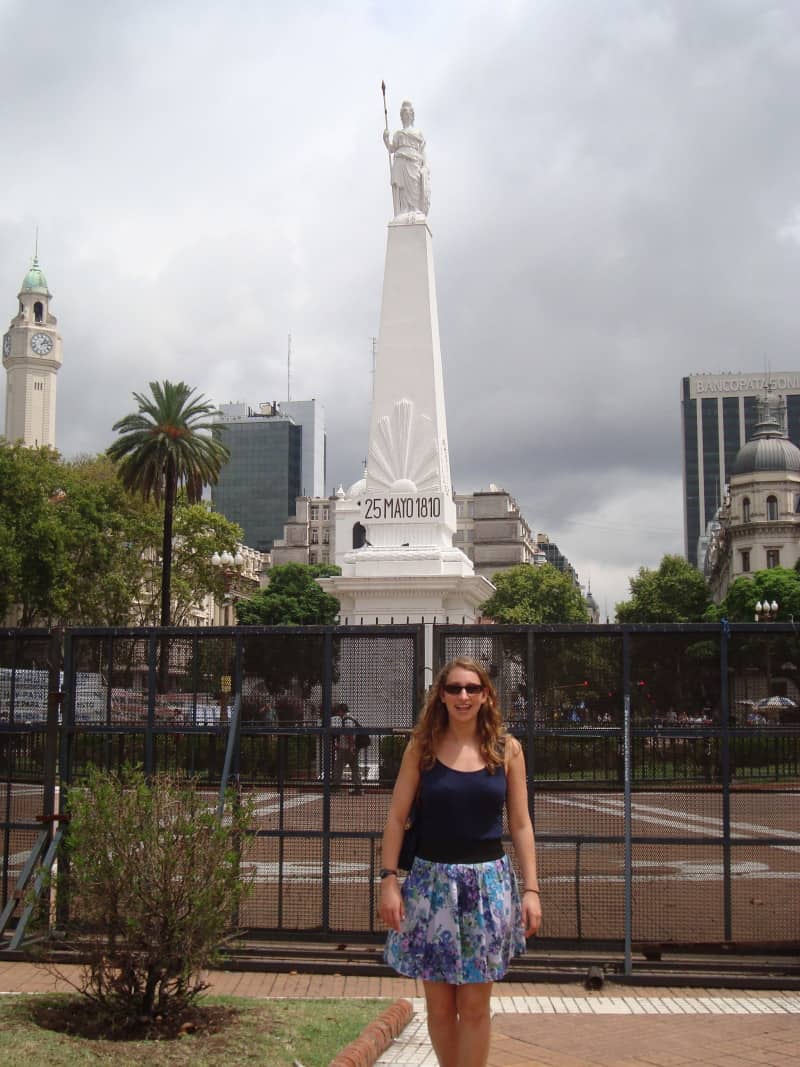A Day in Memory: Las Madres de la Plaza de Mayo
March 24th, 2011 was the 35th anniversary of the “golpe de estado,” or coup d’etat, which took place in Argentina in 1976. At that time, a military “junta” seized power from President Isabelita Peron who took office after the death of her husband, the Argentine political legend, Juan Peron. During this period of military rule, many leftist intellectuals, students, political opposition, lawyers, psychologists, journalists, and others were targeted as “subversivos,” or dangers to the state, and “disappeared.”

One of the first groups to stand up to the military government was a group of twelve very worried mothers whose children had “disappeared.” They began circling around the statue at the center of the Plaza de Mayo. All of this takes place directly in front of the Casa Rosada, the Argentine equivalent of the White House, making the Madres’ demand that the government return their children a clear statement. While many of their college-aged children were never heard from again, the Madres de la Plaza de Mayo became an inspiration for others to follow and speak out against the dictatorship and violations of human rights.
One of the first groups to stand up to the military government was a group of twelve very worried mothers whose children had “disappeared.”
Although in my six weeks here in Buenos Aires, I have only heard the military dictatorship referred to a few times, to view the “marcha” was quite extraordinary. Political groups of all types, human rights’ advocates and, of course, the Madres de la Plaza de Mayo and the Abuelas de la Plaza de Mayo themselves all paraded from the Plaza del Congreso to the Plaza de Mayo holding colorfully hand-painted signs.
The Avenida de Mayo, which connects the two historic landmarks, was brimming with people, signs, flags and a flurry of activity. However, the Avenida de Mayo was not the only street jam-packed with porteños, the parallel streets were also heaving with assemblies headed toward the Plaza.
If you’re ever in Buenos Aires on a Thursday afternoon, do take the time to catch a glimpse of the Madres–who still walk around the Plaza de Mayo each week.
As this procession unfolded, I sat with friends from my exchange program. Although deeply saddened by the tragic origin of events commemorated by the march, I was uplifted by the positive energy of the crowds gathered together in memory. With Argentines passionately waving flags for all different political parties, to students with different carreras, or majors, and from different universities gathering, to dance troupes performing and clusters drumming, the marcha was a parade of motion and even included the infamous signs depicting the names, dates, and photographs of the “desaparecidos.”
In the actual Plaza de Mayo, various groups took turns making speeches over the loudspeaker and huddles congregated in memory and reflection of the day’s historic significance. If you’re ever in Buenos Aires on a Thursday afternoon, do take the time to catch a glimpse of the Madres–who still walk around the Plaza de Mayo each week.








